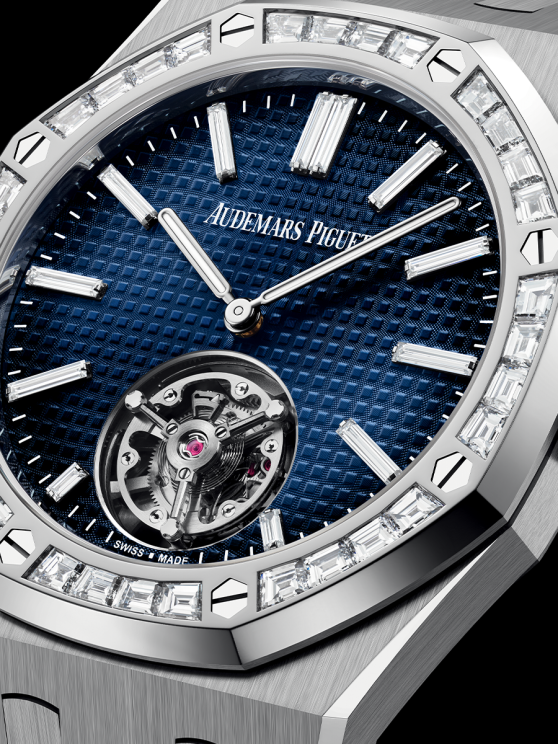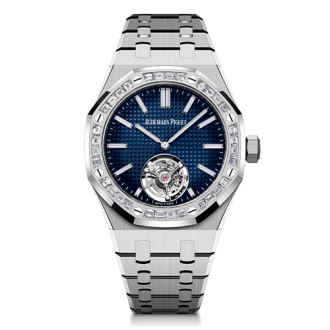You know that friend of yours who’s got it so good in life that even their problems seem kind of enviable? Like, you listen to them complain about running out of garage space for their cars, or how they have to do a longer commute every morning because their genius kid tested into some special genius school. And you think, “Man, I wish I had problems like yours.” I sometimes feel that Audemars Piguet is a bit like that friend, because one of the main problems they face is that their blockbuster commercial appeal and popularity can overshadow their achievements in other areas — like their pioneering work in mechanical innovation. In other words, their problem is that they’re too successful. That sounds like the guy with too many cars and not enough garage space to me.
The Royal Oak being the design juggernaut and horological icon that it is, people often don’t pay too much attention to the exceptional movements in them. And look, I totally get it. If Taylor Swift and Stephen Hawking are at the same party, who do you think most people are going to flock to, even if they objectively recognise that both these personages have the same world-changing status? (That friend of yours would probably be invited to this party and then later complain it was too crowded and there were too many paparazzi blocking the exit.) This is an interesting question to consider in context of the new Royal Oak Selfwinding Flying Tourbillon Extra-Thin, otherwise known as the RD#3.

If we continue to pursue this analogy, Taylor Swift is everything about the watch aside from the movement. It has an industry-defining career, starting with a small community of loyalists before becoming the global superstar of today. Despite its many stylistic variations, it retains its core values and essential spirit, allowing it to become a rallying point in a world where new trends constantly emerge and die out, creating information overload and novelty fatigue. Its latest iteration, a highly evolved blend of classic and modern features (“Jumbo” style hands with rounded terminals paired with baguette-cut diamond indexes; deep-blue petite tapisserie dial with a smoky dark periphery) is now taking the community by storm, creating headlines, new fans and — of course — lots and lots of sales.
On the inside, we have the cal. 2968, the Stephen Hawking in this ongoing (and, some might say, “strained”) metaphor. With one simple conjecture related to the angle of lift of the escapement anchor, it created an entirely new approach to how we can think about escapements, the fundamental mechanism by which mechanical watches function. In my last analysis of the RD#3, I explored in detail how the cal. 2968 was able to move the needle on how watchmakers might leverage new principles of escapement theory to improve chronometric performance in mechanical timepieces. The RD watches of Audemars Piguet are known for bringing mechanically innovative perspectives to the table in a way that is backed up by data and engineering science. In a sense, as interesting as they are as standalone timepieces, they are even more interesting by the potential they introduce to the horological domain in general.

The new RD#3 model, with its smaller dimensions (37mm) in white gold, along with the wide audience appeal of the dark-blue smoked dial and baguette-diamond setting on the bezel and hour indexes, is exactly the kind of model that we would imagine the high-amplitude escapement should ideally appear in. Smaller watches with diamond accents tend to be characterised a certain way; people seem to assume that they have less technical value, and that really shouldn’t be the case at all. Audemars Piguet might be a household name in terms of their identity and branding, which says something about how well they answer the demands of the market, but we ought not to overlook how they also play a strong role in bringing consumers around to new horological points of view.
Perhaps if we paid more attention to this aspect of what they do, we’d understand why it is that Audemars Piguet enjoy the level of success that they do. Of course, they make great watches that sell ridiculously well, but they also work pretty hard at creating the right audience for what they produce. And coming back to that friend we spoke about at the beginning, the one who seems to have everything going for them in life — perhaps we could learn a lesson or two from what they’re doing. Perhaps one day we, too, could have too many cars for our garage.








